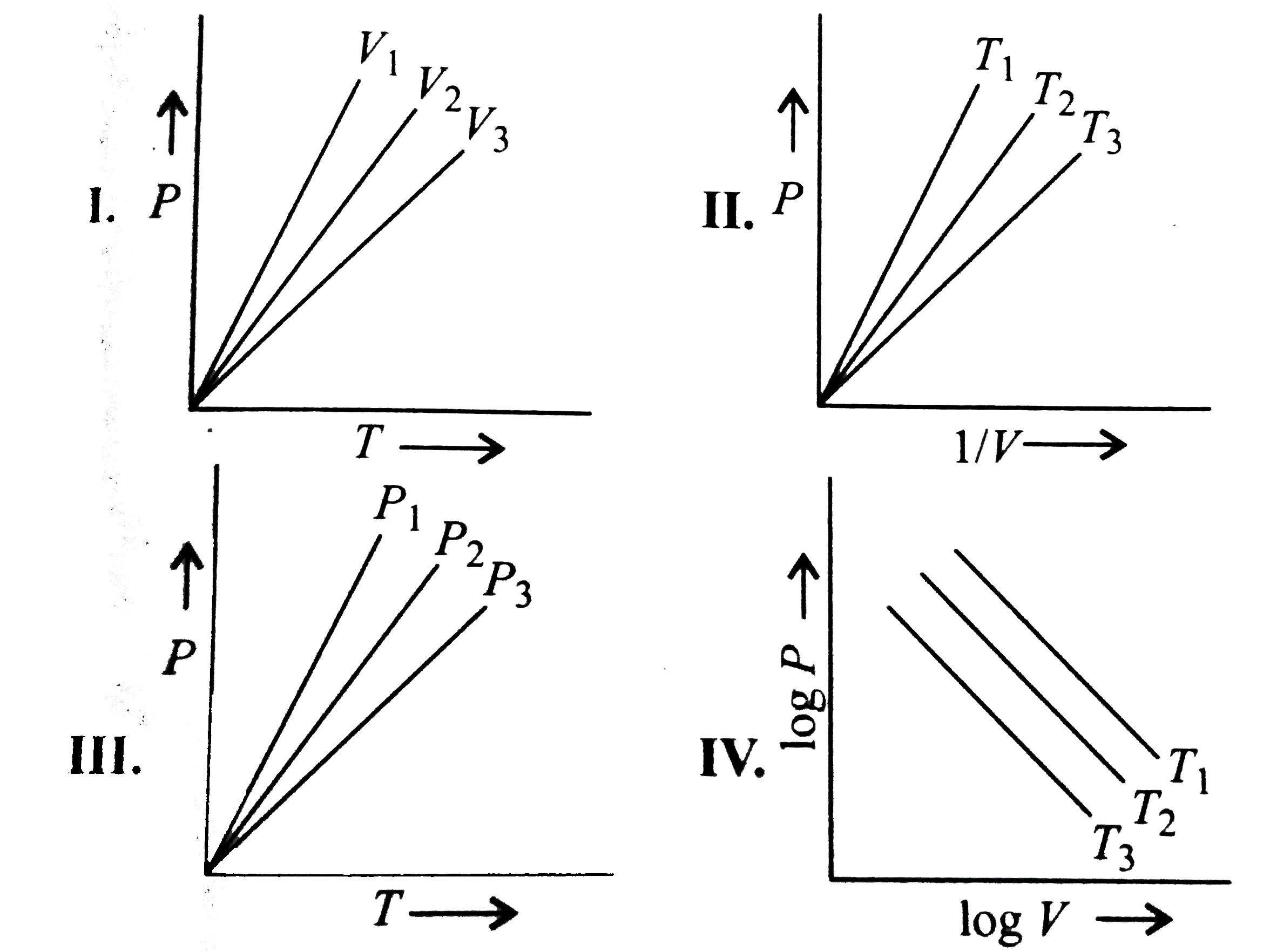Examine the following plots and predict whether in (i) P1<P2andT1>T2 , in (ii) T1=T2<T3, in (iii) V1>V2,in(iv)P1>P2orP2>P1
_E01_267_Q01.png)
The correct Answer is:(i)P1<P2,T1<T2 (ii) T1=T2<T3 (iii) V1<V2(iv)P1>P2
(i) P1V1=nRT1andP2V2=nRT2
∵P2V2>P1V1
⇒nRT2>nRT1⇒T2>T1 For same volume, P1V=nRT1
∵T1<T2 & P2V=nRT2
⇒P1<P2
_E01_267_S01.png)
(ii) P2V2=P1V1=2PV=P2V⇒T1=T2 For state 3:
Let V3=3V/2
P3=3P/2 then P3V3=3P23V2=94PV
∴T3>T2 & T3<T1
_E01_267_S02.png)
(iii) P=mT+C⇒P−CT=m
⇒(P1−CT1)=(P2−CT2) From ideal gas equation P1V1T1=P2V2T2⇒P1V1P2V2=T1T2=(P1−CP2−C)
⇒V1V2=(1−CP1/(1−CP2)<1⇒V1<V2
(iv) V=mT−C,V1+CT1=V2+CT2thenP1V1=nRT1
P2V2=nRT2⇒P1V1P2V2=nRT1nRT2
⇒P1P2=T1T2×V2V1=(V1+CV1)(V2V2+C)
P1P2=(1+CV1)11+CV2>1∴P1>P2
_E01_267_S03.png)
_E01_267_S04.png)
Topper's Solved these Questions
- BOOK - ALLENCHAPTER - GEOMETRICAL OPTICSEXERCISE - EXERCISE - 04 (B)15videos
GEOMETRICAL OPTICS
- BOOK - ALLENCHAPTER - GEOMETRICAL OPTICSEXERCISE - EXERCISE - 05 (A)73videos
GEOMETRICAL OPTICS
- BOOK - ALLENCHAPTER - GEOMETRICAL OPTICSEXERCISE - Comprehension Based Questions66videos
GEOMETRICAL OPTICS
- BOOK - ALLENCHAPTER - CURRENT ELECTRICITYEXERCISE - EX.II66videos
CURRENT ELECTRICITY
- BOOK - ALLENCHAPTER - GRAVITATIONEXERCISE - EXERCISE 49videos
GRAVITATION
Similar Questions
Knowledge Check
- Question 1 - Select One
Which of the following relationships between partial pressure , volume and temperature is correct ?
(i) P=nRTV
(ii) Ptotal=P1+P2+P3
(iii) Ptotal=(n1+n2+n3)RTVA(i) and (ii)B(i) and (iii)C(ii) and (iii)D(i) , (ii) and (iii)
Let E1andE2 be two independent events such that P(E1)=P1 and P(E2)=P2, describe in words of the events whose probabilities are
(i) P1P2 (ii) (1−P1)P2
(iii) 1−(1−P1)(1−P2) (iv) P1+P2−2P1P2View SolutionA and B are events of an experiment such that 0<P(A), P(B)<1. If P(B')>P(A'), then
View SolutionIf 'P' is in equilibrium then T1/T2 is
 View Solution
View SolutionIn the following P-V diagram two adiabatics cut two isothermals at temperature T1andT2 (fig). The value of VaVd will be
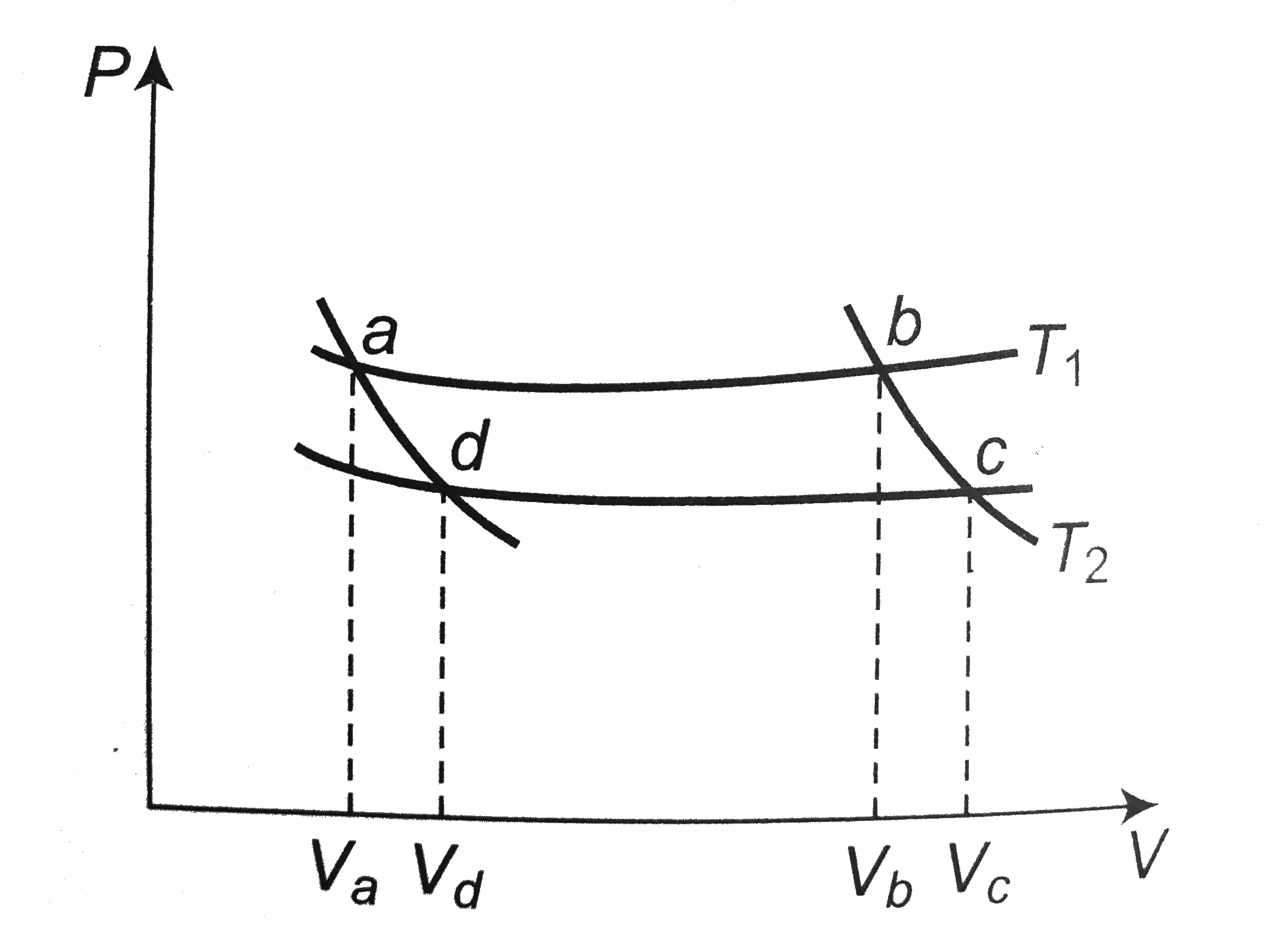 View Solution
View SolutionActivity of a radioactive substance is A1 at time t1 and A2 at time t2(t2>t1) , then the ratio of fA2A1 is:
View SolutionFor an ideal gas, an illustratio of three different paths A(B+C) and (D+E) from an initial state P1,V1,T1 to a final state P2,V2,T1 is shown in the given figure.
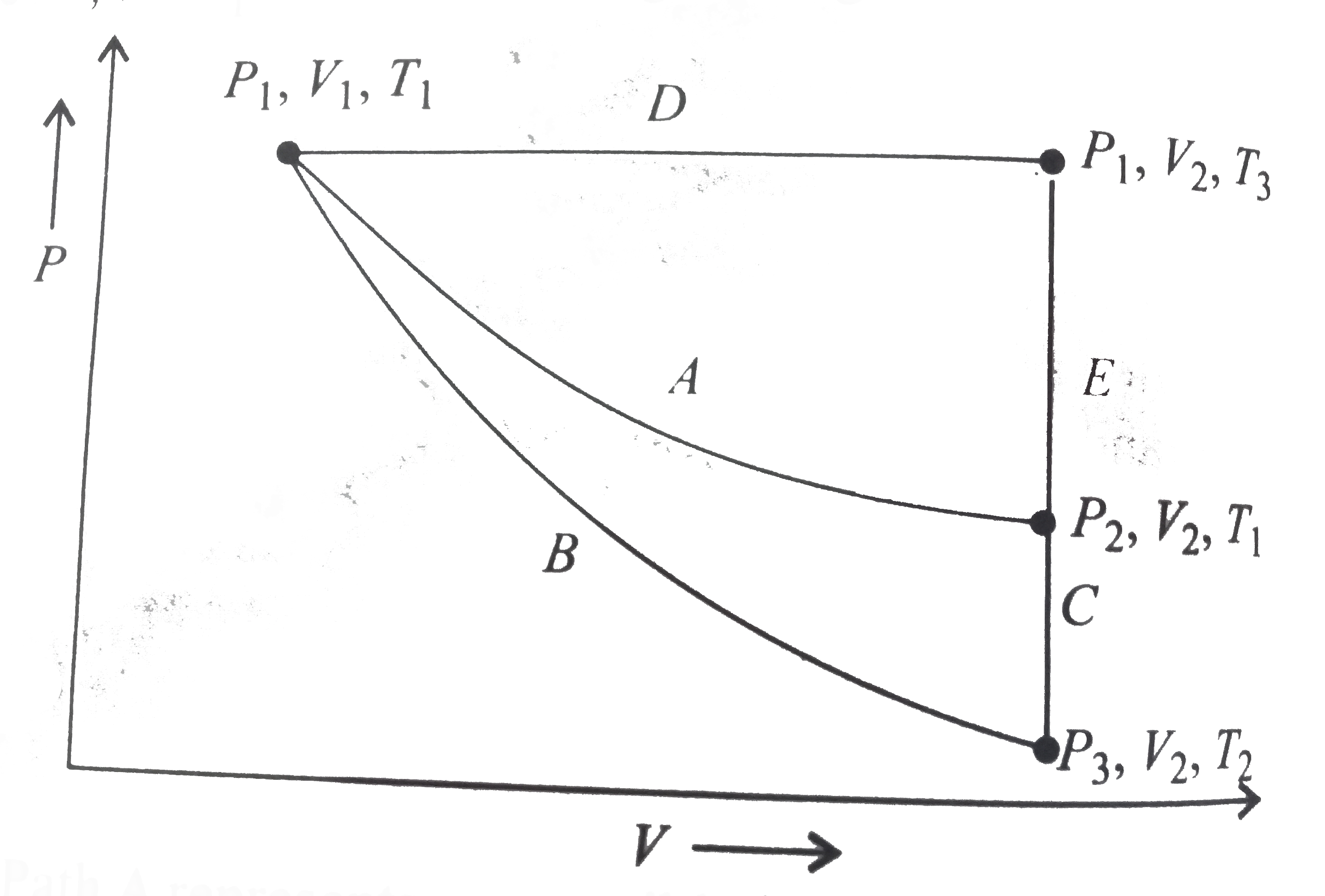
Path Arepresents a reversible isothermal expansion form P1,V1 to P2,V2, Path (B+C) represents a reversible adiabatic expansion (B) from P1,V1,T1→P3,V2,T2 followed by reversible heating the gas at constant volume (C)from P3,V2,T2 to P2,V2,T1. Path (D+E) represents a reversible expansion at constant pressure P1(D) from P1,V1,T1 to P1,V2,T3 followed by a reversible cooling at constant volume V2(E) from P1,V2,T3→P2,V2,T1.
What is ΔS for path A?View SolutionFor an ideal gas, an illustratio of three different paths A(B+C) and (D+E) from an initial state P1,V1,T1 to a final state P2,V2,T1 is shown in the given figure.
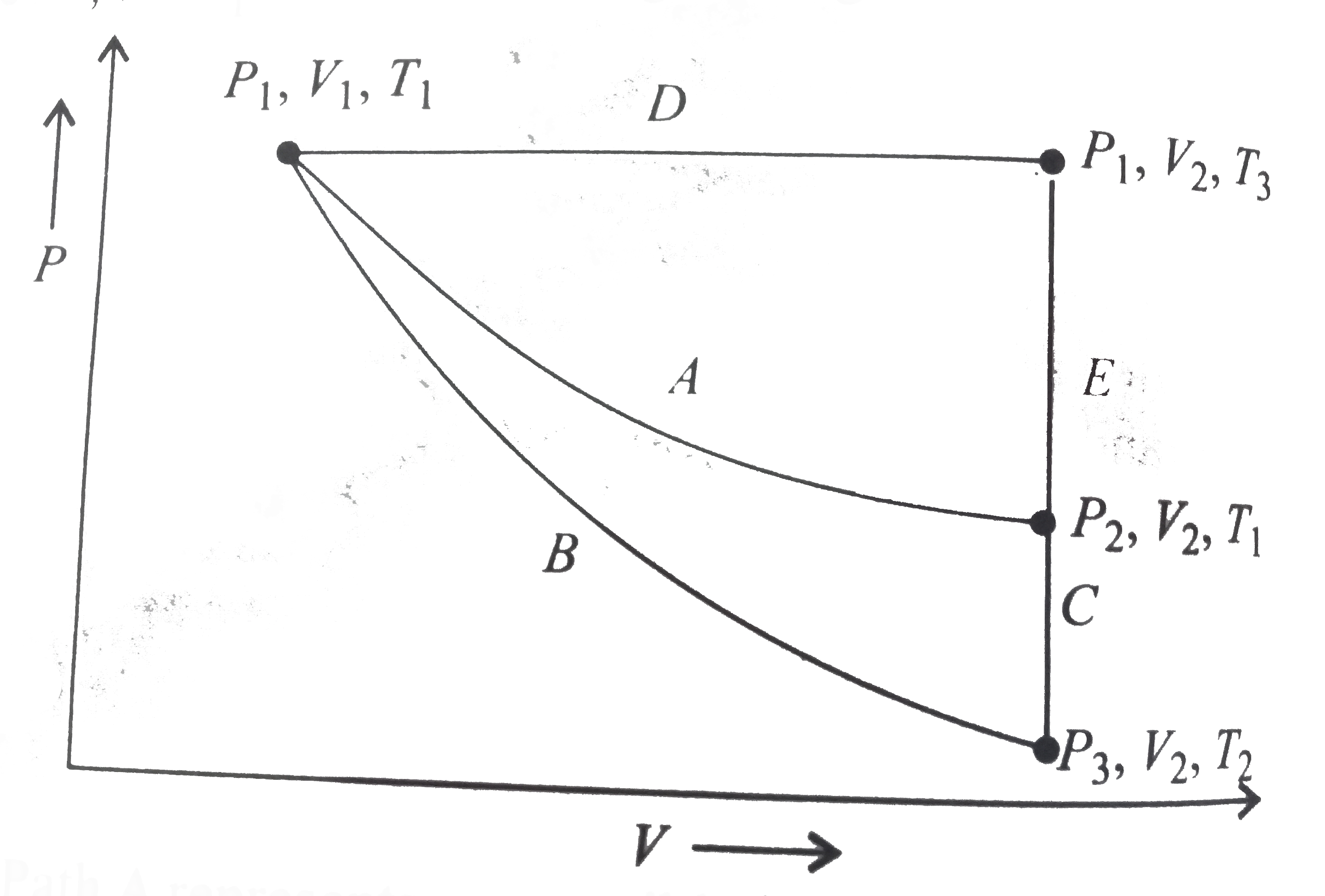
Path Arepresents a reversible isothermal expansion form P1,V1 to P2,V2, Path (B+C) represents a reversible adiabatic expansion (B) from P1,V1,T1→P3,V2,T2 followed by reversible heating the gas at constant volume (C)from P3,V2,T2 to P2,V2,T1. Path (D+E) represents a reversible expansion at constant pressure P1(D) from P1,V1,T1 to P1,V2,T3 followed by a reversible cooling at constant volume V2(E) from P1,V2,T3→P2,V2,T1.
What is ΔS for path (D+E)?View Solution


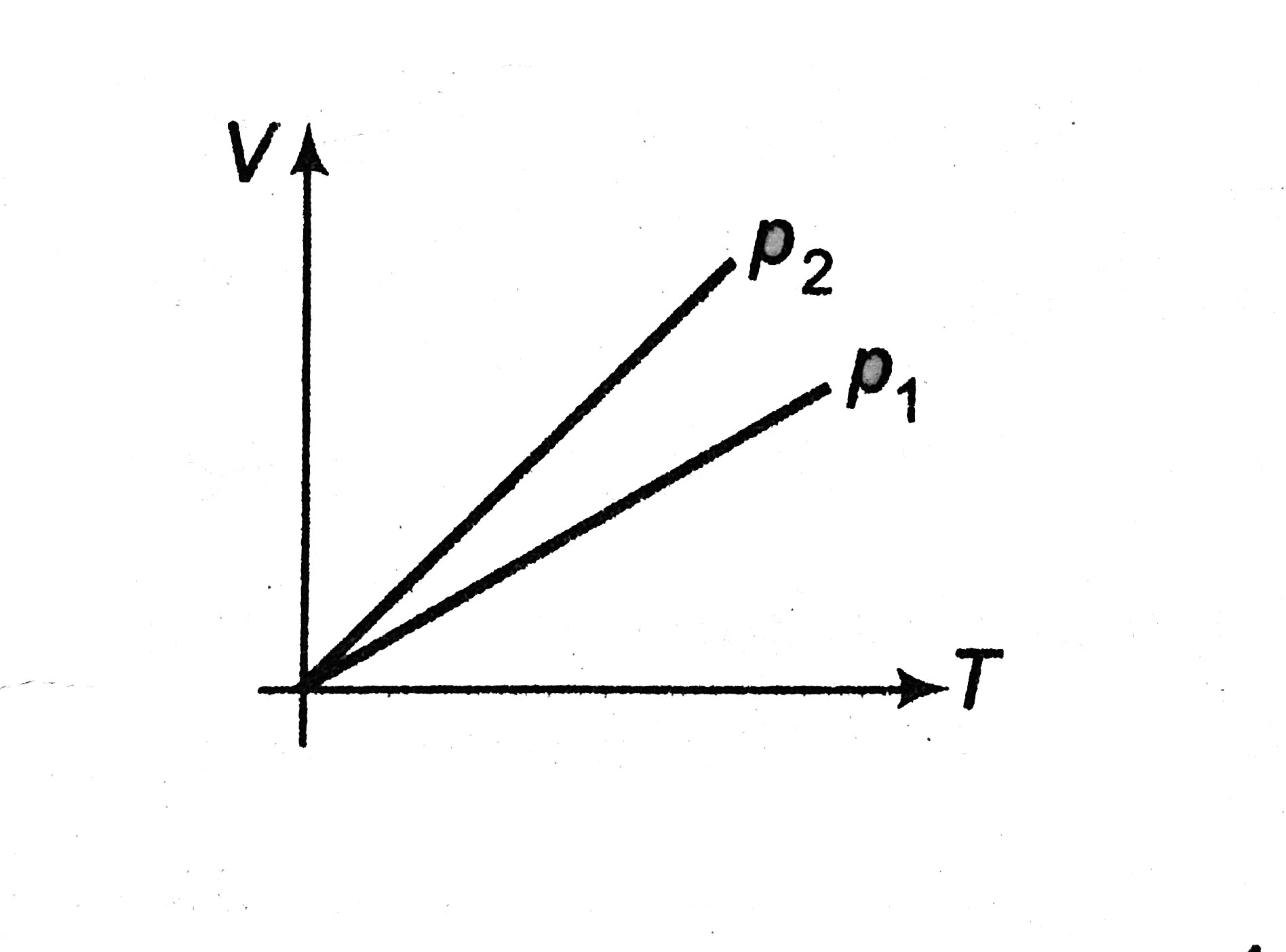 .
. 